ON THE ROAD | Bonnie Yap in South Africa
After serving as Assistant Head Sommelier in Singapore, Bonnie Yap recently assumed the role of Wine Development Manager at the Club. In February, she joined three other industry professionals on a trip to South Africa organised by the importer Stellez Vine, taking in large, historic wineries and homespun family affairs
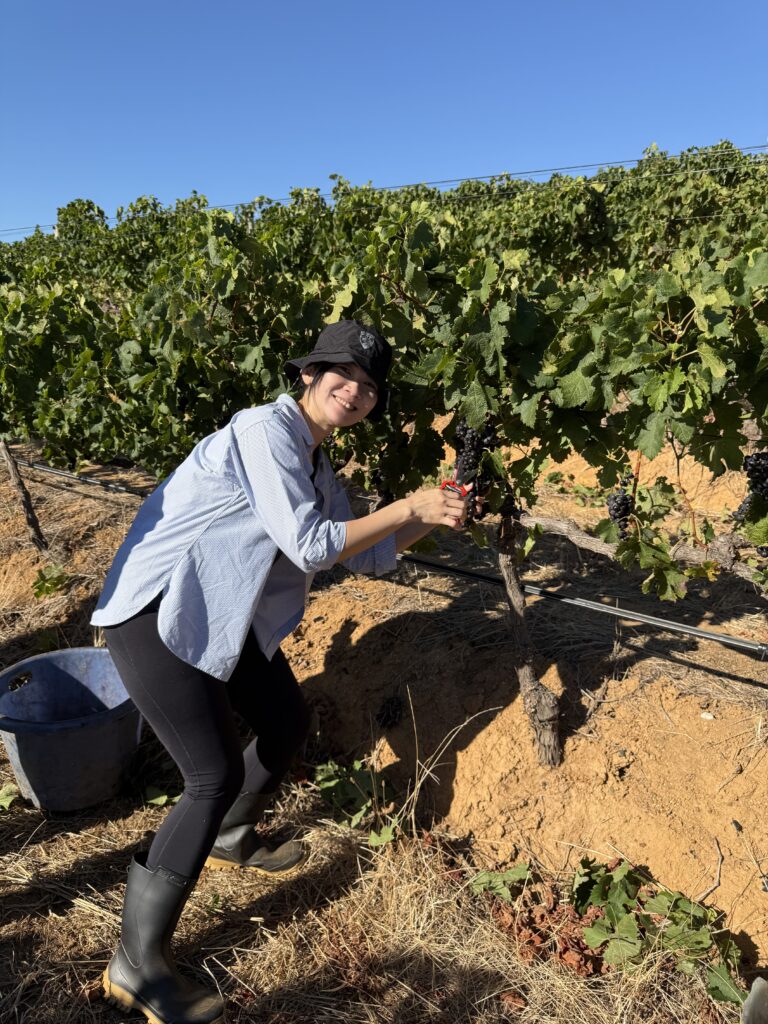
It was my first wine trip to South Africa, and I must say the Cape Winelands really are beautiful. But we were there to drill deep into viticulture and vinification – and I can safely say they made us work. I lent a hand with harvest under the hot sun, helped sort the grapes, monitored sugar levels and ferment temperatures, and worked on the previously alien concepts of punchdown and pumpover. Amid all such activity, my key takeaway was how crucial the viticulturalist is. Just as crucial, if not more so, than the winemaker. Viticulturists are the ones on the front line, working directly with the land and the vines, learning from nature, observing changes, and carefully managing them to grow the best possible grapes. It’s a relationship built on patience, knowledge and constant adaptation.
We started off at Newton Johnson, in the cool Hemel-en-Aarde Valley, where this family-owned winery is renowned for its Pinot Noir and Chardonnay. We were hosted by Bevan and Gordon Newton. Bevan is the jovial and charismatic one, always ready with a joke to lighten the mood light, while Gordon is more thoughtful and meticulous – especially when it comes to grape sorting. As the grapes moved along the conveyor belt, we picked out any rogue elements, like leaves, bugs or damaged grapes before they were sent for crushing.
We also recorded sugar levels and temperatures on the whiteboard for the winemakers. These readings are crucial for tracking fermentation and shaping the wine style. Sugar levels show how ripe the grapes are and how much alcohol the wine will have; temperature controls the speed of fermentation and protects the yeast and flavours, with the winemaker then having to decide whether cooling is necessary.
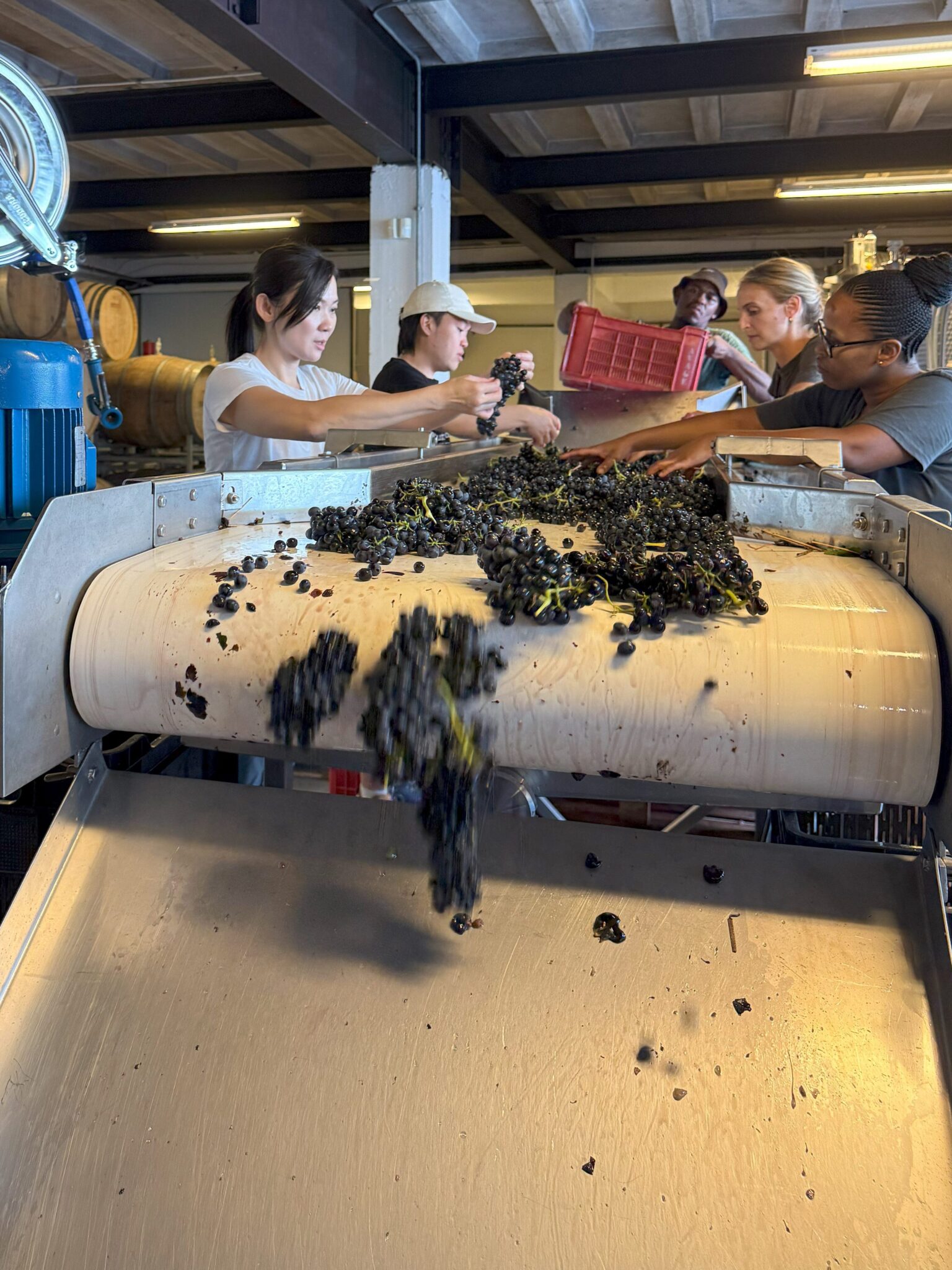

Next up was Savage Wines, a small, boutique winery specialising in small-batch production with a strong reputation for producing complex, high-quality wines. Duncan Savage is a truly engaging and energetic personality, incredibly talkative, and well-known for his infectious passion for winemaking.
His winery operates at a similarly fast pace, with a dynamic, hands-on approach. The team is strong and efficient, constantly setting up, breaking down, and moving equipment around to keep things flowing. The pressing process here is done with great care – though in something of a risk, they allowed us to get involved. We scooped out the fermented grapes from the large vat, and very carefully transferred them to a hydraulic basket press, where the grapes are gently pressed to extract the remaining juice. After the pressing, we also lent a hand ‘racking off’ the dried grape cake, a solid mass that remains after the juice has been extracted. Suddenly all these winemaking terms finally began to mean something…
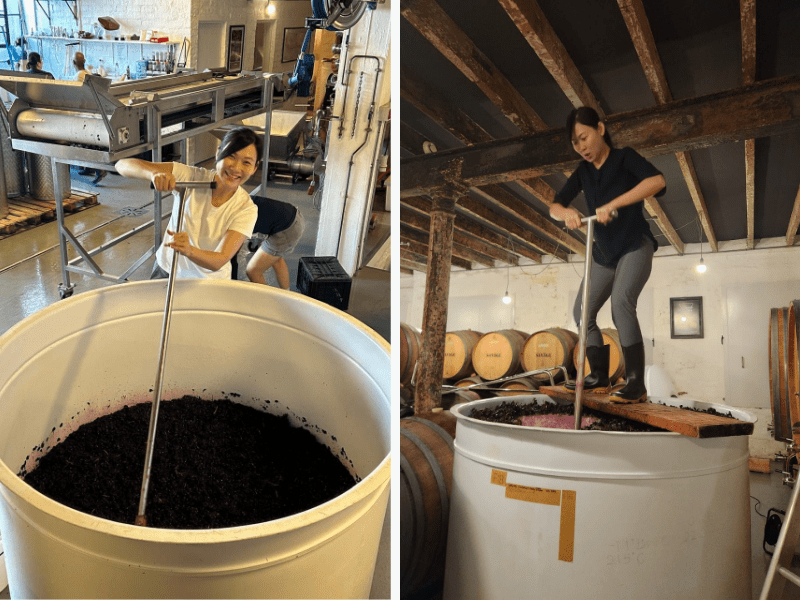

From there, we headed to Groot Constantia, one of South Africa’s oldest wineries, with over 300 years of history, set in the Constantia Valley just outside Cape Town. Here we met Daniel Keulder (winemaker) and Floricius Beukes (viticulturist). Flo stands out for his deep passion for sustainable farming practices and the long-term wellbeing of the vines. He also cooks a mean braai – the South African form of BBQ – which was most welcome that evening after three hours of hard toil picking the late-ripening Merlot grapes under the hot morning sun. Believe me, this felt like a workout. And not just physically… We had to carefully check the grapes for any signs of fungus or disease, as well as keeping an eye out for spiders hiding in the vines.
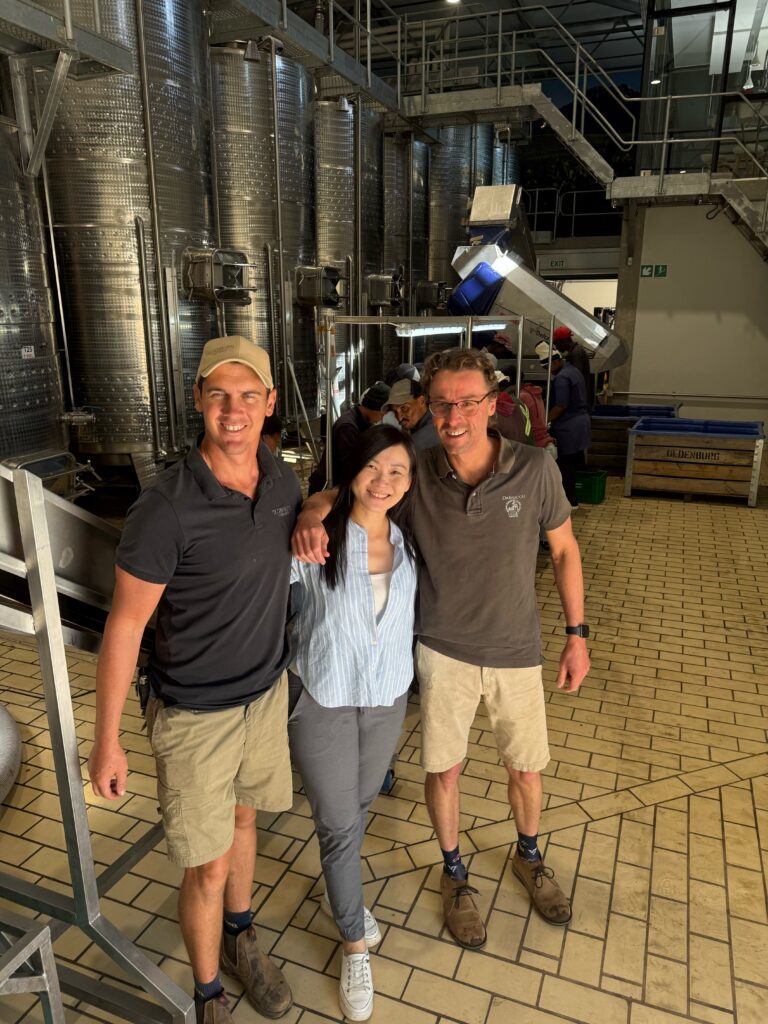

Our last stop was Oldenburg Vineyards, in the equally picturesque Stellenbosch. Here, the vineyards are surrounded by mountains that create a unique microclimate of warm days and cool nights that allows the grapes to ripen slowly, preserving their acidity. The focus here is on Bordeaux-style blends, and we were put under the supervision of winemaker Nic van Aarde and viticulturist Christo Crous for a spot of pumping over (aka remontage) and punching down. We learned how winemakers manage the ‘cap’ (the grape skins that float to the top during fermentation), with juice pumped from the bottom of the tank and poured over the top to keep the cap moist and extract colour, flavour and tannins from the skins. Punchdown is another way to manage the cap by pushing it down into the juice using a special metal tool, thereby extracting more flavour and ensuring an even fermentation.
Our time with the winemakers and viticulturists was truly eye-opening. Their deep knowledge, passion and collaborative approach highlighted the intricate balance between nature, science and artistry that defines great wine. The dedication they have to their craft, paired with their ability to adapt to changing conditions, ensures that each vintage tells a unique story of the terroir. This encounter not only deepened my appreciation for the winemaking process but also reinforced the profound connection between soil, climate and the final bottle – one that captures the heart and soul of the vineyard.
Bevan Johnson and Duncan Savage are among the owners and winemakers who will be hosting Members on our 67 Pall Mall trip to South Africa in September. For more details and to register your interest, see here
Not a 67 Pall Mall Member? Sign up to receive a monthly selection of articles from The Back Label by filling out your details below
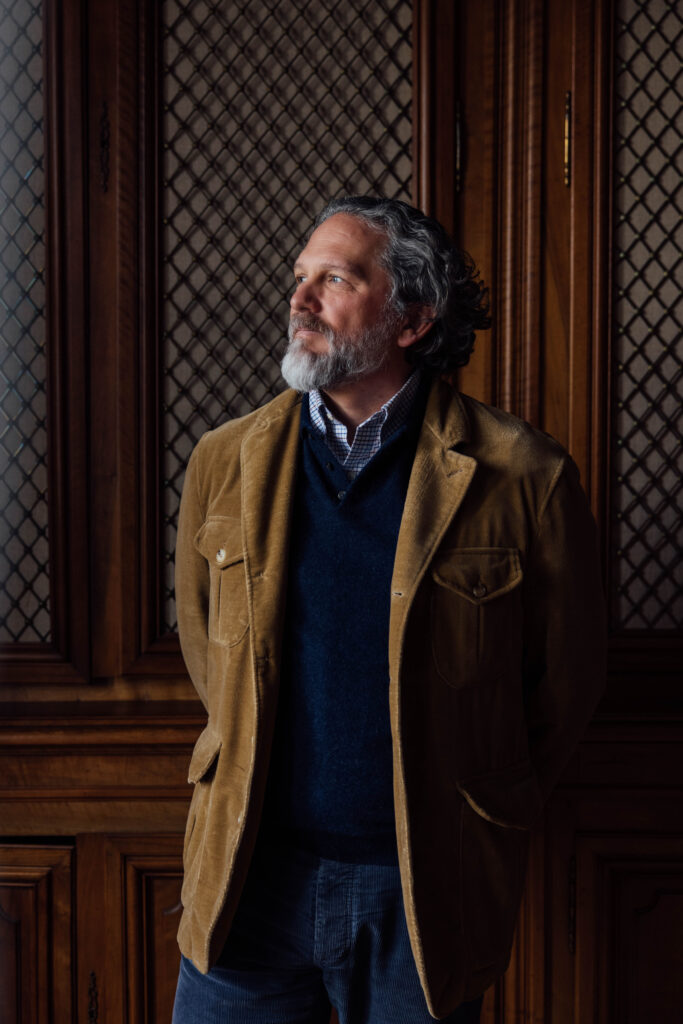

TWO
MINUTES
WITH
Axel Heinz, Château Lascombes
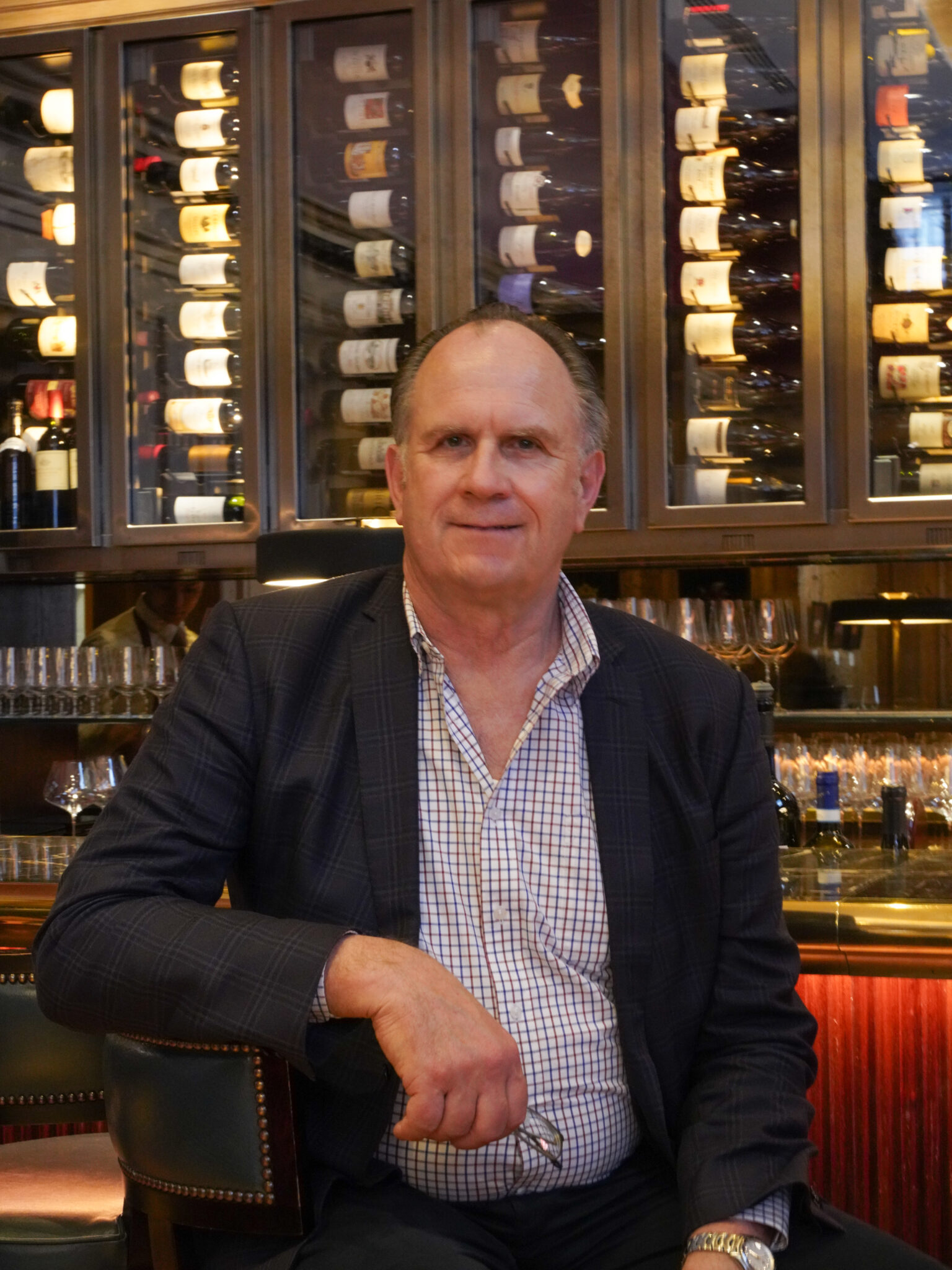

WHAT
I’VE
LEARNED
Michael Brajkovich MW
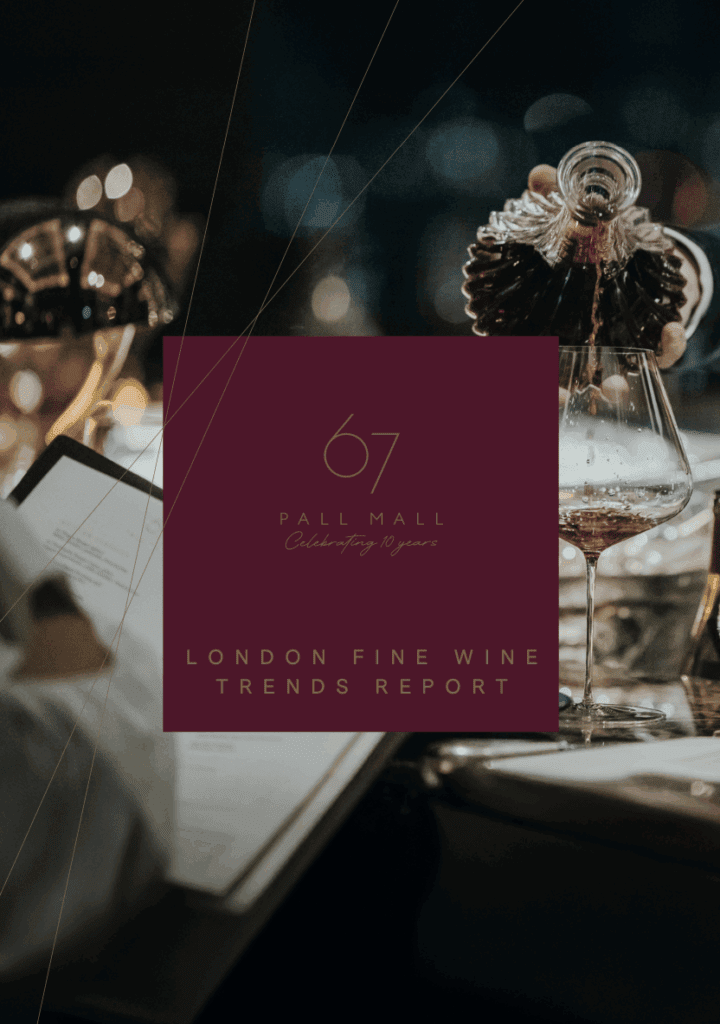

UNDER
THE
SURFACE
67 Pall Mall London’s first Fine Wine Trends Report
